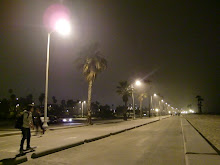

Gyoza (dumpling) is a very popular side dish originally from China. Gyoza consists of a ground meat usually pork and a variety of vegetable filling wrapped into a thinly rolled dough. Gyoza can be pan fried, boiled, or steamed. This time we tried pan fried. Crispy out side and juicy filling with soy-vinegar sauce specially made for gyoza. You can't stop eating!
We made gyoza from the fillings. First, cut all vegetable into very small pieces. We used cabbage, green onion( called nira), onion, garlic, and ginger. Then mix the cabbage and salt, put all vegetable together and squeeze them. You will put the ground meat into the vegetable and mix them. It looks messy but the more you mix them the better the gyoza tastes. Wrap the fillings and cook on the pan. Pour some water and cover the pan. Let it cook until the water evaporates.
Every year on the memorial day, I enjoy Jazz and Raggae concert at UCLA. After the concert my friends come over and make gyoza, eat and drink until midnight....


